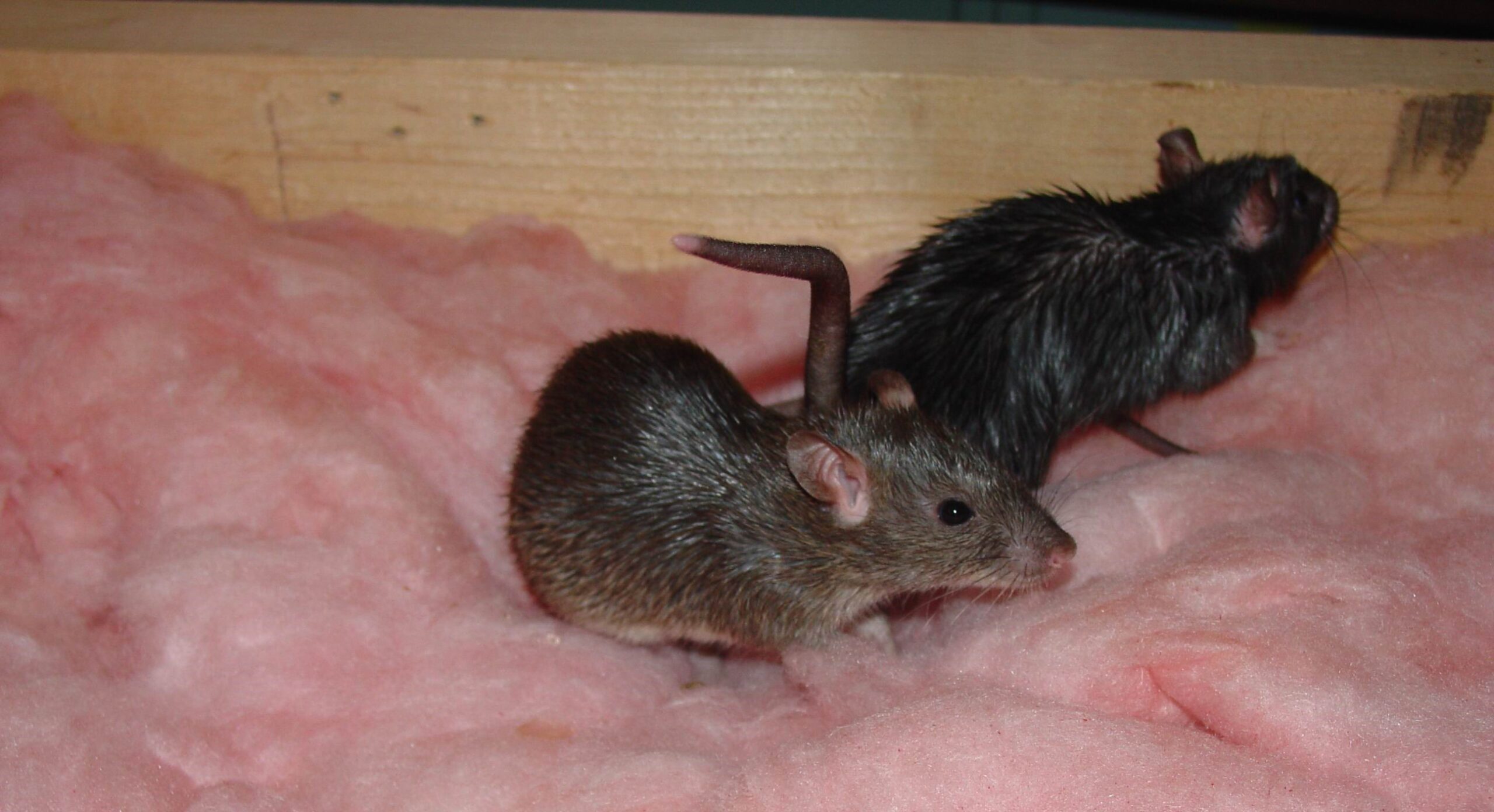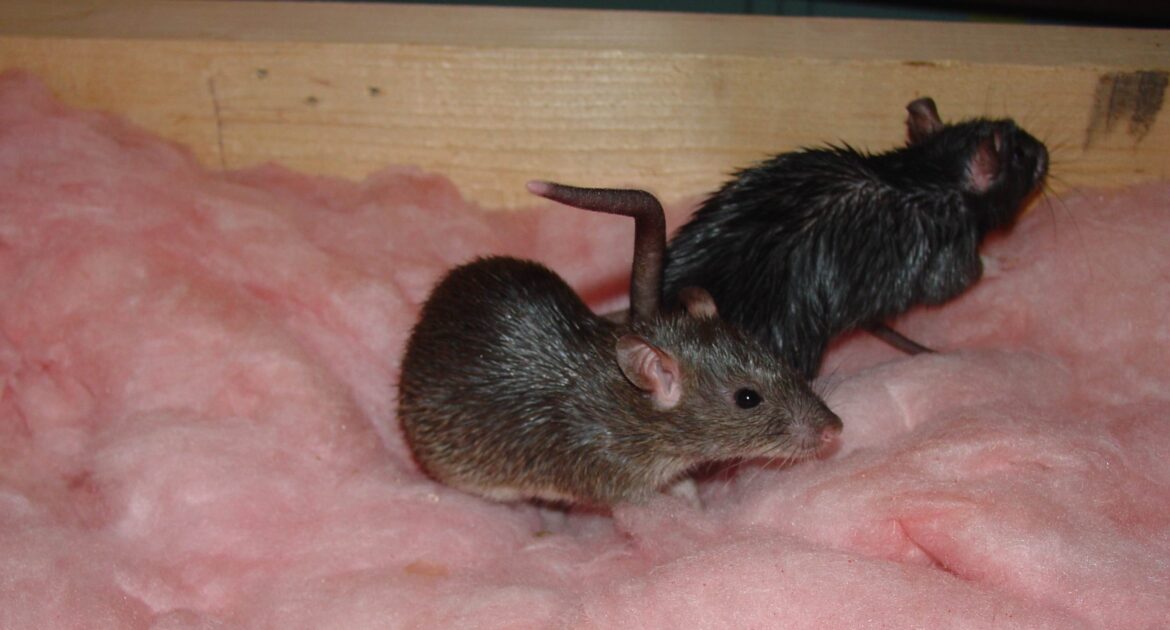The Norway rat, also known as the brown rat or sewer rat, is a common rodent found in urban and rural areas. These rats are known for their adaptability and can thrive in various environments, including homes, farms, and cities. They are typically larger than other rat species, with adults weighing up to one pound and measuring about 16 inches in length, including their tails.
Norway rats are social creatures, often forming colonies where multiple individuals live together. Understanding how many Norway rats live together can be crucial for effective pest management, as infestations can quickly grow if not addressed.
By learning more about these rodents, you can better understand the challenges they present and the importance of professional pest control services in Toronto to manage and prevent infestations.
More About the Norway Rat
The first thing to know about Norway rats is that they’re not native to Norway; their name might be misleading. These rodents originated from Asia and have spread across the globe, thriving in human environments. They’re usually brown or grey, have a blunt nose, and are larger than many other rat species.
These rats are highly social creatures, typically living in colonies that can become quite large if left unchecked. You might wonder, “How many Norway rats live together?” A single colony can house dozens, if not hundreds, of individuals. This makes them particularly challenging to manage, as they reproduce quickly and can cause significant damage to your property.
Norway rats are nocturnal, meaning they are most active during the night. They are omnivores, willing to eat almost anything, although they prefer grains, fruits, and meat. Their adaptability in diet is one reason they thrive in proximity to humans. They create burrows and are known for their gnawing habits, which can lead to structural damage in homes. The gnaw marks you see on wood, plastic, or even electrical wiring are often their doing, making them more than just a nuisance. It’s essential to address any signs of these rodents swiftly to minimize potential damage.
The Life Cycle and Behaviour
One of the most fascinating yet alarming aspects of Norway rats is their rapid reproduction rate. A single female rat can have up to seven litters per year, with each litter consisting of around 8-12 pups. This means that a small infestation can escalate quickly if not managed properly. Their gestation period is only about three weeks, and the pups reach sexual maturity in just a few months. This rapid life cycle enables their populations to explode in a short period.
These rodents are known for their digging and burrowing behaviour. They prefer to build their nests in burrows, which they dig into the ground, often near structures like homes, garages, or sheds. These burrows can undermine foundations, creating further hazards. In colder climates, you might wonder, “Do Norway rats hibernate?” The answer is no. Unlike some other animals, Norway rats remain active throughout the year, seeking warmth and food sources even in the harshest conditions. This makes them a year-round problem for homeowners.
In terms of intelligence, Norway rats are highly perceptive and cautious. They have a keen sense of their environment and are wary of new objects or changes within their territory. This trait, known as neophobia, can make trapping and baiting them particularly challenging. It’s one of the reasons why professional wildlife control services, like Skedaddle, are often necessary to effectively manage and remove these rodents from your home.
Do Norway Rats Hibernate?
No, Norway rats do not hibernate, which distinguishes them from some other wildlife species. They remain active throughout the year, actively searching for food and shelter regardless of the weather conditions. This continuous activity increases their likelihood of intruding into human spaces, making them a persistent concern for homeowners. During colder months, they seek warmth and will often enter buildings through small openings, making their presence even more problematic.
When it comes to controlling Norway rat populations, swift action is essential. Given their rapid breeding cycle and social living arrangements, even a small rodent sighting can indicate a larger infestation. Professional pest control services, like Skedaddle, are equipped with the expertise and tools necessary to assess the situation accurately and implement effective removal strategies. Regular inspections and preventative measures can safeguard your home from these resilient pests.
Health Risks and Property Damage
Norway rats pose significant health risks to humans and pets. They are carriers of various diseases, including leptospirosis, salmonella, and hantavirus. These diseases can be transmitted through their urine, droppings, and bites, making it crucial to handle infestations promptly and safely. Additionally, their presence can exacerbate respiratory conditions like asthma, as their dander and droppings can become airborne and contaminate indoor air quality.
Beyond health risks, the property damage caused by Norway rats can be extensive. Their gnawing habits are not limited to food containers; they chew on wires, insulation, and wooden structures, which can lead to electrical fires and structural weaknesses. I’ve seen cases where the entire electrical system of a home had to be rewired due to rat damage. They also contaminate food stores with their droppings and urine, leading to further waste and financial loss.
The burrowing behavior of these rats can also damage gardens and landscapes. They dig extensive tunnels and create nests underground, which can destroy plant roots and compromise the integrity of garden structures. If you have a compost pile, it can become a feeding ground for these rodents, attracting them closer to your living spaces.
Preventing and Managing Norway Rat Infestations
Prevention is always better than cure when it comes to managing Norway rats. The first step in prevention is to eliminate food sources. Store food in secure, airtight containers and ensure that garbage bins are sealed tightly. Regularly clean areas where food is prepared and consumed to remove crumbs and spills that might attract these rodents. Compost piles should be managed carefully, and pet food should not be left out overnight.
Next, it’s essential to seal entry points. Norway rats can squeeze through surprisingly small openings, so inspect your home for gaps and cracks in the foundation, walls, and roof. Pay particular attention to areas where utilities enter the home, as these are common entry points. Use materials like steel wool, caulk, and metal mesh to seal these gaps effectively.
If you suspect an infestation, it’s crucial to act quickly. While there are various DIY methods available, they often fail to address the root of the problem and can leave you with recurring issues. This is where professional services like Skedaddle come in. We specialize in humane wildlife control, ensuring that the rats are removed safely without causing harm to them or your property.
Exclusion And Prevention
When dealing with Norway rats, professional intervention is often necessary to ensure complete removal and prevention of future infestations. At Skedaddle, we take a humane and comprehensive approach to wildlife control. Unlike other services that rely on traps and relocation, our methods focus on exclusion and prevention.
Our team begins with a thorough inspection of your property to identify entry points and signs of rodent activity. We then develop a customized plan to seal these entry points and remove the rats humanely. Our methods are environmentally friendly and designed to prevent re-entry, ensuring long-term peace of mind for homeowners.
We understand the stress and anxiety that come with a rodent infestation. That’s why we prioritize customer satisfaction and transparency throughout the process. Our experienced technicians are trained to handle even the most challenging infestations, providing you with expert advice and solutions tailored to your needs.
Take Action Now
Understanding Norway rats and their impact on your home is the first step in managing and preventing infestations. These resilient rodents can cause significant health risks and property damage if left unchecked. By taking proactive measures to eliminate food sources, seal entry points, and seek professional help when necessary, you can protect your home and family from these unwelcome guests.
At Skedaddle, we are committed to providing humane and effective wildlife control services. Our expertise and dedication ensure that your home remains rat-free, allowing you to enjoy a safe and comfortable living environment. If you’re dealing with a Norway rat issue or simply want to take preventive measures, don’t hesitate to reach out to us. Take action today to safeguard your home. Contact Skedaddle in Toronto to learn more about our services and how we can help you achieve a rat-free home.




